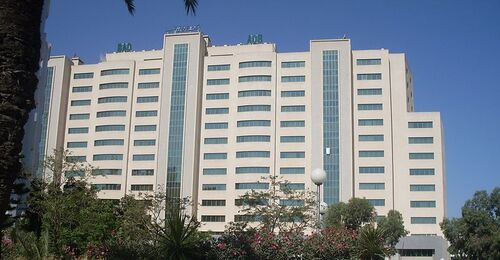Le pont Kinshasa-Brazzaville
Ce pont de 1 575 mètres de long, qui reliera les deux capitales les plus proches au monde, sera à la fois routier et ferré, avec un poste de contrôle frontalier de chaque côté. Il s’agit d’un projet de longue date, longtemps mis de côté puis de nouveau d’actualité grâce au financement partiel de la BAD. Le coût de cet ouvrage est estimé à 550 millions de dollars, dont 210 millions seront fournis par la BAD.
Actuellement, 750 000 personnes et 340 000 tonnes de fret transitent chaque année entre les deux capitales, en bateau ou en avion. Une fois le pont construit, le trafic est estimé à 3 millions de personnes et 2 millions de tonnes de fret d’ici 2025.
Cette infrastructure permettra de développer des zones économiques de part et d’autre et bénéficiera ainsi autant à la République démocratique du Congo qu’au Congo-Brazzaville.
Le projet gazier du Mozambique
Plusieurs projets gaziers sont en cours de développement au Mozambique. Le plus important d’entre eux, Mozambique LNG, est géré par Total et représente à ce jour le plus grand investissement étranger (23 milliards de dollars) en Afrique.
La BAD doit investir dans ce projet à hauteur de 400 millions de dollars. Des fonds qui serviront à financer la construction de l’usine de production de gaz naturel liquéfié, mais également une infrastructure de fourniture de gaz domestique, un terminal d’exportation, un gazoduc et des installations d’extraction en mer.
L’objectif de la BAD est de permettre aux populations de tirer profit de ce projet gazier et de bénéficier du développement économique qui en résultera.
Le corridor Mombasa-Nairobi-Addis Abeba
Ce corridor routier long de 895 kilomètres est composé de deux tronçons : un premier tronçon de 504 kilomètres dans la partie kényane reliant Merille à Turbi, et un deuxième tronçon de 391 kilomètres reliant les villes éthiopiennes de Hagere Mariam, Yabelo et Mega. La BAD a financé ce projet à hauteur de 64 %, en investissant 670 millions de dollars.
Grâce à ce corridor, les échanges commerciaux entre le Kenya et l’Éthiopie devraient être multipliés par 5, et passer de 35 à 175 millions de dollars. De plus, cette infrastructure va permettre une importante réduction des coûts de transport et d’expédition des marchandises.
La construction de la plateforme Jorf Lasfar Phosphate Hub au Maroc
La BAD a investi 450 millions de dollars dans ce projet d’amélioration de la production de phosphate. Il s’agit plus précisément d’une plateforme industrielle de 1 800 hectares, construite pour accueillir 10 usines d’engrais, fabriqués à partir de roches phosphatées et exportés dans le monde entier.
Pour financer ce projet, la BAD a accordé en 2012 un premier prêt de 250 millions de dollars, et un deuxième prêt de 200 millions de dollars fin 2018 destiné à étendre la plateforme. Fin 2016, le programme avait permis de créer plus de 20 000 emplois directs, et généré plus de 175 millions de dollars de dividendes perçus par le gouvernement marocain.
Le Maroc est aujourd’hui le deuxième producteur mondial de phosphate et le premier exportateur africain.
